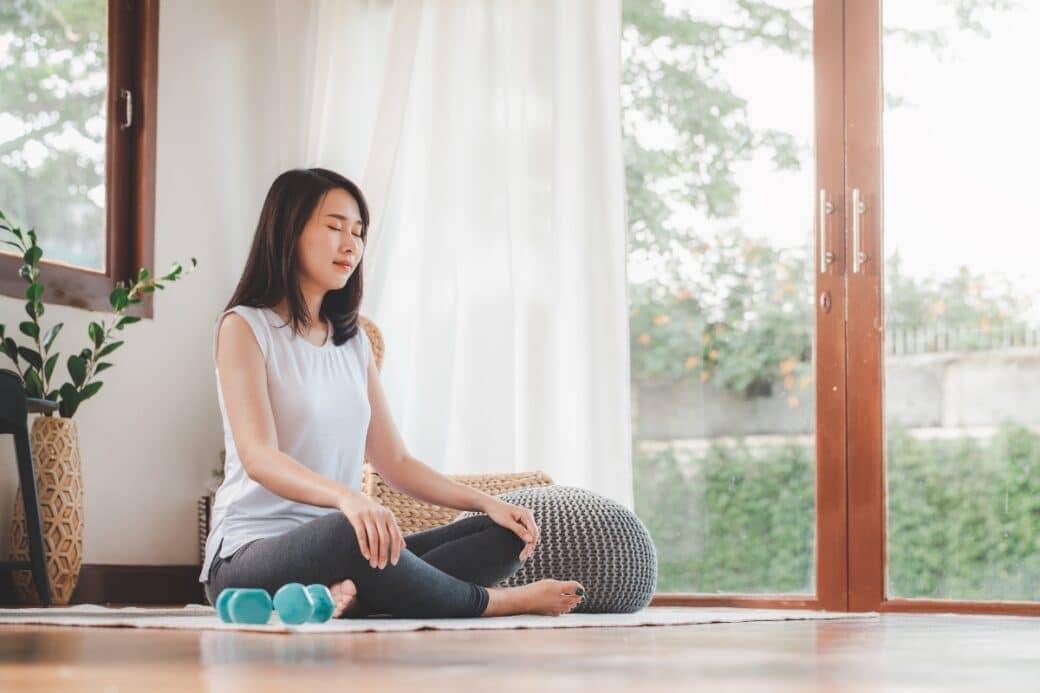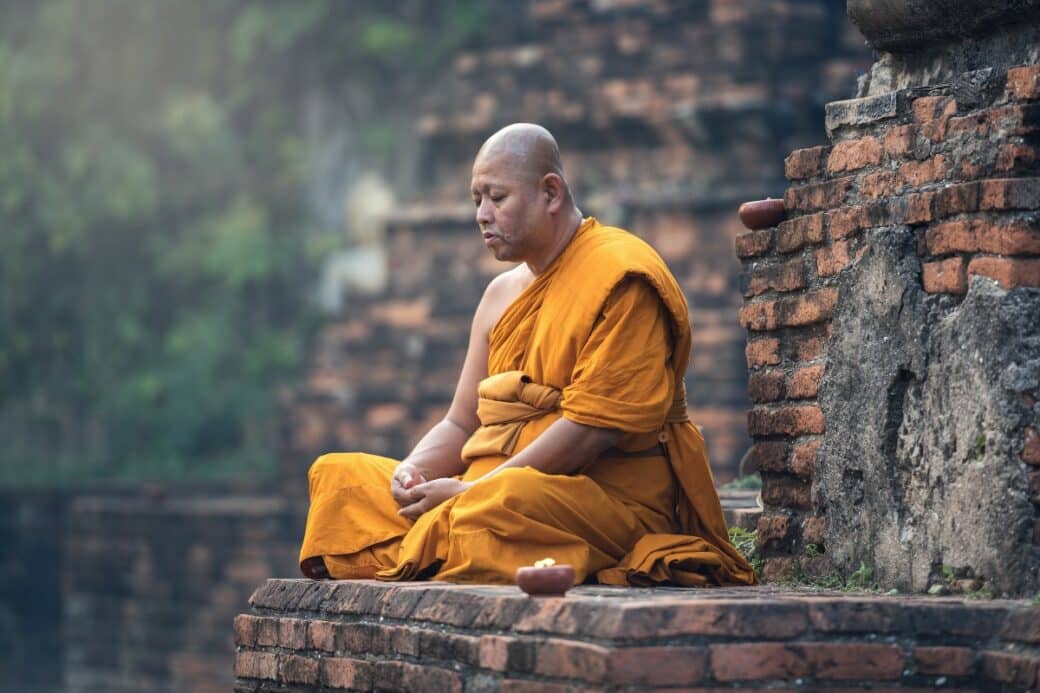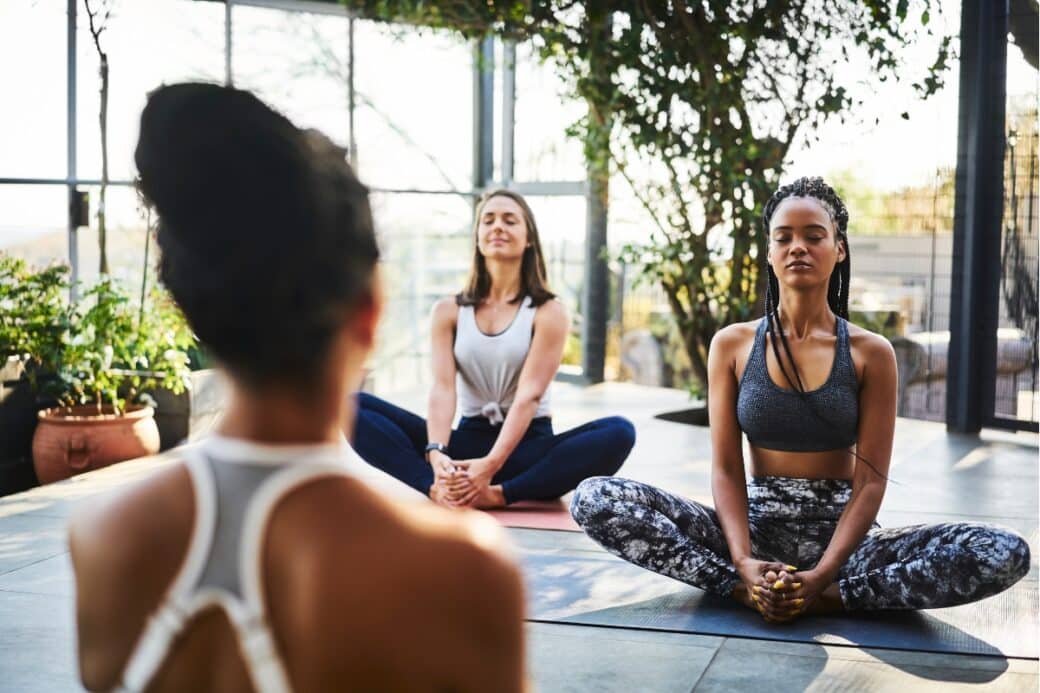Picture this: you’re out on a peaceful morning walk, surrounded by the soothing sounds of nature. As you take each step, you feel a deep sense of connection with your surroundings. Your mind is calm and focused, as you engage in a practice known as walking meditation. In this article, we will explore the transformative power of walking meditation, guided by the renowned expert Joe Dispenza. Discover how this mindful practice can bring clarity, peace, and a renewed sense of self in your everyday life. So, grab your walking shoes and get ready to embark on a journey of self-discovery through the art of walking meditation.
Understanding the Concept of Walking Meditation
Walking meditation is a practice that combines the physical act of walking with the mindfulness and focus of traditional meditation. It provides a different approach to achieving inner calm and a heightened state of consciousness. Unlike sitting meditation, which involves staying still and focusing on the breath or a particular point of focus, walking meditation allows for movement while maintaining a deep sense of awareness.
The basis of walking meditation
Walking meditation is rooted in ancient practices from various spiritual traditions, including Buddhism and Taoism. It has been used for centuries as a means of cultivating mindfulness, expanding awareness, and deepening the connection between body and mind. The basic idea is to bring one’s attention fully to the act of walking, to engage with each step and the sensations that arise in the body.

How walking meditation differs from traditional meditation
Walking meditation differs from traditional meditation in that it involves physical movement. While both practices share a focus on mindfulness and cultivating awareness, walking meditation allows individuals to harmonize movement and stillness. This can be particularly beneficial for those who struggle with sitting still for extended periods or find it challenging to maintain focus during seated meditation.
The benefits and objectives of walking meditation
Walking meditation offers numerous benefits for both the body and mind. It promotes physical well-being by providing a low-impact form of exercise and supporting cardiovascular health. On a mental and emotional level, walking meditation helps reduce stress, enhance concentration, and improve overall mental clarity. The objectives of walking meditation include cultivating mindfulness, developing a deeper mind-body connection, and finding a sense of inner peace and calm.
Joe Dispenza’s Approach to Walking Meditation
About Joe Dispenza
Joe Dispenza is a renowned author, speaker, and researcher in the field of neuroscience and human potential. He has gained global recognition for his work on the mind-body connection and the power of meditation to heal and transform lives. Dispenza’s teachings revolve around the idea that by actively engaging in meditation practices, individuals can create positive changes in their neurophysiology and heal from various physical and emotional ailments.
Principles of Joe Dispenza’s teachings and their relation to walking meditation
Dispenza’s teachings are based on the understanding that the mind plays a crucial role in shaping our reality. He emphasizes the power of focused thought, visualization, and intention to create meaningful transformations in our lives. In the context of walking meditation, Dispenza’s principles can be applied to enhance the experience and deepen the mind-body connection. By integrating his teachings, individuals can learn to harness the power of their thoughts and intentions while engaging in the practice of walking meditation.
Joe Dispenza’s technique of walking meditation explained
According to Dispenza, walking meditation is an opportunity to let go of the analytical mind and enter a state of non-thinking. His technique involves focusing on the space between each step and cultivating a sense of presence and awareness. By directing attention to the sensations in the body, the rhythm of the breath, and the surroundings, one can deepen their connection to the present moment and access a heightened state of consciousness. Dispenza’s technique encourages individuals to find their own pace, staying fully present with each step and embracing the experience in its entirety.
The Correlation between Mindfulness and Walking Meditation
The role of mindfulness in walking meditation
Mindfulness is a central component of walking meditation. It involves bringing non-judgmental attention to the present moment, being aware of one’s thoughts, emotions, and bodily sensations without getting caught up in them. In walking meditation, mindfulness helps individuals stay fully present with each step, noticing the movements of the body, the contact of the feet with the ground, and the surrounding environment. By cultivating mindfulness, one can develop a deeper sense of self-awareness and engage in the practice with a clear and focused mind.
How to achieve mindfulness in walking meditation following Joe Dispenza’s teachings
Joe Dispenza’s teachings provide valuable insights into achieving mindfulness during walking meditation. He emphasizes the importance of letting go of thinking and entering a state of non-thinking. To achieve mindfulness, individuals can start by focusing on their breath and grounding themselves in the present moment. As they walk, they can direct their attention to the sensations in their body, the movements of their limbs, and the rhythmic pattern of their steps. By staying fully present and engaged with each moment of the experience, individuals can deepen their mindfulness practice during walking meditation.
Balancing mindfulness and movement during the process
Walking meditation requires a delicate balance between mindfulness and movement. While it is essential to maintain awareness and focus on the present moment, it is equally important to allow the body to naturally move and flow. Balancing mindfulness and movement involves finding a rhythm that feels comfortable and sustainable. By paying attention to the sensations in the body and the breath, individuals can adjust their pace and gait, allowing for a harmonious integration of mindfulness and movement.
Preparations for Walking Meditation
Choosing the right environment
Choosing the right environment is crucial for a successful walking meditation practice. Ideally, the environment should be calm, peaceful, and free from distractions. Natural settings, such as parks or gardens, offer a serene atmosphere that can enhance the experience of walking meditation. However, if accessing natural environments is not possible, individuals can create a peaceful space at home or in a quiet corner of their neighborhood. The key is to choose a location that allows for a sense of tranquility and enables individuals to focus their attention inward.
Deciding the duration
The duration of walking meditation can vary depending on individual preferences and schedules. Some individuals may find it beneficial to start with shorter sessions, gradually increasing the duration as their practice deepens. A typical starting point is around 10-15 minutes, with the option to extend the time as one becomes more comfortable and experienced. It is essential to choose a duration that feels manageable and sustainable, ensuring that the practice remains enjoyable and not overwhelming.
Mentally preparing for the meditation session
Before beginning a walking meditation session, it is important to take the time to mentally prepare. This can involve setting clear intentions for the practice, reflecting on personal goals and aspirations, and cultivating a sense of curiosity and openness. It may also be helpful to engage in a brief period of seated meditation or deep breathing exercises to calm the mind and create a focused mindset. By mentally preparing for the meditation session, individuals can enter the practice with a clear and receptive state of mind, maximizing the benefits of walking meditation.
Process of Conducting Walking Meditation
Posture and gait
Maintaining a proper posture and gait is essential for an effective walking meditation practice. Individuals should aim to keep their posture upright and aligned, allowing for optimal energy flow throughout the body. The head should be held naturally, neither tilted upward nor downward, and the shoulders should be relaxed and open. The arms can hang naturally by the sides, with the hands in a comfortable position. As for the gait, it is beneficial to find a pace that feels natural and aligned with the individual’s rhythm. Each step should be taken with intention and awareness, with a sense of grounding and connection to the earth.
Breathing techniques during walking meditation
Breathing plays a vital role in walking meditation, serving as an anchor for mindfulness and presence. While there is no specific breathing technique required, individuals can focus on deepening their breath and syncing it with their steps. For example, one can inhale deeply as they lift their foot, hold the breath briefly as the foot is suspended in the air, and exhale slowly as the foot touches the ground. This synchronization of breath and movement can help foster a deeper connection to the present moment and cultivate a sense of calm and stability.
Increasing mindfulness during the walk
To increase mindfulness during walking meditation, individuals can incorporate various practices and techniques. One effective method is to direct attention to the physical sensations in the body, such as the contact of the feet with the ground, the movement of the legs, and the gentle sway of the arms. Paying attention to the surroundings and engaging the senses can also enhance mindfulness. This can involve noticing the colors, shapes, and sounds in the environment, as well as the feeling of the breeze on the skin. By continuously bringing attention back to the present moment, individuals can deepen their mindfulness practice throughout the walk.
Applying Joe Dispenza’s Methods in Walking Meditation
How to integrate Joe Dispenza’s principles into walking meditation
Integrating Joe Dispenza’s principles into walking meditation involves applying his teachings to enhance the experience and deepen the mind-body connection. One way to do this is by incorporating visualizations and intentions into the practice. Before starting the walk, individuals can imagine themselves surrounded by a warm and healing light, visualizing the energy flowing through their body with each step. They can also set specific intentions related to personal growth, healing, or transformation, carrying these intentions with them throughout the walk. By aligning their thoughts and intentions with the physical act of walking, individuals can amplify the effects of the practice.
Dispenza’s specific techniques for enhancing concentration
Joe Dispenza offers specific techniques for enhancing concentration and focus during meditation, which can be applied to walking meditation as well. One technique involves using a mental anchor, such as repeating a mantra or a word, to help maintain attention and prevent the mind from wandering. Another technique is to engage the senses fully, noticing the details and subtleties of the surrounding environment, which can enhance alertness and present-moment awareness. By incorporating these techniques into walking meditation, individuals can deepen their concentration and experience a more profound sense of presence.
Tips for mastering Dispenza’s instruction and making them a habit
Mastering Joe Dispenza’s instructions and making them a habit requires practice and consistency. Here are some tips to support the integration of his teachings into walking meditation:
-
Start with shorter sessions: Begin by incorporating Dispenza’s principles into shorter walking meditation sessions, gradually increasing the duration over time.
-
Regular practice: Consistency is key. Aim to practice walking meditation regularly, ideally daily, to create a routine and establish a habit.
-
Journaling: Keep a journal to record insights, experiences, and any shifts in thoughts, emotions, or physical sensations. Reflecting on these observations can deepen the understanding and integration of Dispenza’s teachings.
-
Seek guidance: Consider attending workshops, retreats, or finding a meditation group where experienced practitioners or teachers can provide guidance and support.
-
Mindful reminders: Use reminders throughout the day to stay connected to the principles of walking meditation and Dispenza’s teachings. This can include setting alarms on a phone or placing visual cues in your environment.
By following these tips and dedicating time and effort to the practice, individuals can master Joe Dispenza’s instructions and make them an integral part of their walking meditation journey.
Dealing with Obstacles during Walking Meditation
Handling distractions during walking meditation
Distractions are a common challenge in any meditation practice, including walking meditation. The key is not to resist or judge distractions but rather to acknowledge them and gently bring the focus back to the present moment. If the mind becomes preoccupied with thoughts, worries, or external stimuli, individuals can simply observe them without getting entangled. By maintaining a non-judgmental and compassionate attitude towards distractions, and consistently redirecting attention to the practice of walking, individuals can navigate through distractions with ease.
Dealing with physical discomfort
Physical discomfort may arise during walking meditation, especially if individuals are not accustomed to prolonged walking or have any existing physical conditions. It is essential to listen to the body and make any necessary adjustments to ensure comfort and safety. Individuals can explore finding a walking speed and gait that suits their physical capabilities, as well as taking regular breaks if needed. Additionally, incorporating gentle stretching exercises before and after the walking meditation session can help alleviate any discomfort or tension in the body.
Overcoming mental and emotional hurdles
Mental and emotional hurdles can also present challenges during walking meditation. Negative thoughts, self-doubt, or emotional distress may arise, potentially hindering the practice. The key is to observe these thoughts and emotions with curiosity and compassion, understanding that they are part of the human experience. By acknowledging and accepting them without judgment, individuals can allow them to pass and redirect their attention back to the present moment. Regular practice can help develop resilience and inner strength to overcome mental and emotional hurdles, gradually deepening the meditation experience.
Evaluating Progress in Walking Meditation
Monitoring mindfulness
Monitoring mindfulness involves assessing the level of presence and awareness during walking meditation. Individuals can reflect on their ability to stay fully engaged with each step, the sensations in the body, and the environment. They can evaluate their capacity to redirect attention from distractions back to the practice, as well as the overall quality of their focus and concentration. By regularly monitoring mindfulness, individuals can track their progress and identify areas for further development.
Recognizing changes in emotional wellbeing
Walking meditation can have a significant impact on emotional wellbeing, helping individuals cultivate a sense of calm, clarity, and emotional balance. By regularly checking in with their emotional state before and after the practice, individuals can recognize any shifts or changes in their mood, stress levels, or overall emotional well-being. This self-reflection can provide valuable insights into how walking meditation is positively influencing emotional health and serve as motivation to continue the practice.
Assessing improvements in physical health and balance
Walking meditation offers numerous physical benefits, including increased cardiovascular health, improved posture and balance, and enhanced muscle tone. By assessing improvements in these areas, individuals can gauge the positive impact of walking meditation on their physical well-being. This can involve observing changes in stamina, energy levels, and overall physical comfort during walking. Regular physical self-assessment can help individuals stay motivated and appreciate the physical transformations resulting from their walking meditation practice.
Walking Meditation for People with Special Requirements
Adapting walking meditation for people with mobility issues
Walking meditation can be adapted for individuals with mobility issues who may not be able to walk in the traditional sense. In such cases, the focus shifts from physical movement to the internal experience. Individuals can still engage in the practice by choosing alternative forms of movement, such as wheelchair or seated walking meditations. The key is to maintain the same principles of mindfulness, focus, and attention to the present moment, adapting the practice to fit individual capabilities and physical requirements.
Modifying Dispenza’s techniques to fit personal needs and limitations
Joe Dispenza’s techniques can be modified to fit personal needs and limitations. His teachings emphasize the importance of individual experience and self-exploration. Individuals can adapt his instructions to their specific circumstances, making necessary modifications to suit their physical, mental, or emotional needs. For example, if walking for an extended period is not feasible, individuals can incorporate shorter walking intervals or combine walking with seated meditation. By honoring personal needs and limitations, individuals can still experience the benefits of walking meditation while making it accessible and enjoyable.
Transforming Life with Walking Meditation
Long-term benefits of walking meditation
Walking meditation offers numerous long-term benefits that can profoundly transform one’s life. Regular practice can lead to increased self-awareness, enhanced focus and concentration, reduced stress and anxiety, and improved emotional well-being. It can also foster a deeper connection with nature and the surrounding environment, promoting a sense of interconnectedness and harmony. Additionally, the physical benefits of walking meditation, such as improved cardiovascular health and increased vitality, can contribute to a higher quality of life overall.
Incorporating walking meditation into daily routine
Incorporating walking meditation into the daily routine is an excellent way to ensure regular practice and reap the full benefits. Individuals can choose a specific time of day that works best for them, whether it’s early morning, during lunch breaks, or in the evenings. They can also integrate walking meditation into their existing exercise routine by allocating a portion of their daily walk or jog to mindful walking. By making walking meditation a consistent part of the daily routine, individuals can experience the transformative effects it offers on a regular basis.
Sharing and promoting the benefits of walking meditation in society
Walking meditation has the potential to benefit not only individuals but also society as a whole. By sharing and promoting the benefits of walking meditation, individuals can inspire others to explore and adopt the practice. They can engage in conversations, lead workshops, or share personal experiences through various mediums to create awareness and interest. The more people engage in walking meditation, the more widespread the positive effects on individual well-being and collective consciousness can become.
In conclusion, walking meditation provides a unique and accessible approach to cultivating mindfulness and deepening the mind-body connection. By incorporating principles and techniques from Joe Dispenza’s teachings, individuals can amplify the transformative effects of walking meditation. Whether adapting the practice for people with special requirements or assessing progress and making it a part of daily life, walking meditation offers a pathway to inner peace, self-discovery, and holistic well-being.




